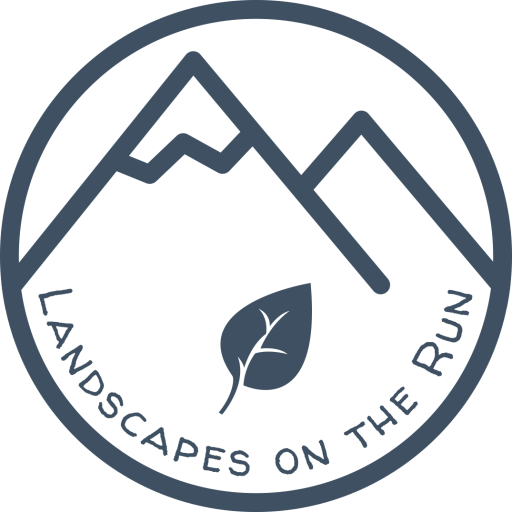

- Home
- Blog
- Recent
-
Featured
-
Featured
- Recent
-
- Destinations
- Life On The Run
Select Page
Starting a blog today is easier than it’s ever been before. You can quickly and cheaply have a personalized website up, running and blogging about whatever your heart desires in just a couple of hours. Here are some resources that I’ve used and recommend.
Before you go diving into building a blog, it’s time for a little soul-searching. Think about what the goal of your blog is. What’s your focus? The internet is filled with a cacophony of blogging noise, especially in the travel space. How will you differentiate yourself from the rest? Is it fashion? Couples or family travel? Maybe you’ll travel the world wearing only the clothes on your back?
The design of your blog is going to be influenced by its focus and the goals you set for your site. So before you rush to build, spend a little time thinking about the bigger picture, and it’ll save you a lot of time later if you have to redesign every time the goals of your site change.
Your domain is one of the first important decisions you’ll make about your blog. Some things to consider about your domain (and blog name) before you go and try to buy one.
Are there any websites similarly named that could cause confusion? Could you run into legal troubles infringing on a name that already is trademarked?Are there any websites similarly named that could cause confusion? Could you run into legal troubles infringing on a name that already is trademarked?
-including keywords related to the focus of your blog can help with your SEO off the bat. I chose not to use words like sustainability, green, environment, etc in my blog because I wanted the name to be flexible beyond sustainable tourism. Other words that are popular for travel blogs like nomad, wander, roaming, etc have been used a lot. So keep item #1 above in mind when using these terms in your domain.
Ok, so the guy who created “landscapesontherun.com” is lecturing on name length. The point is, you want to make your blog easy to remember, search for, and type in. Avoid hyphens and words that are difficult to spell.
Twitter has a character limit for usernames, which is why my twitter username is “landscapesotr.” Can you convert it to a hashtag to use in social, or abbreviate your blog for quick reference? I use LOTR. Another blog similar to mine that I enjoy reading, Don’t Forget To Move, uses DFTM.
 I use Siteground to host LOTR. They specialize in WordPress hosting, and help guide you through installing WordPress right off the bat. They have plans starting under $4/month, their support is excellent, and their performance is as good or better than hosts such as Bluehost or Hostgator. As your site grows, you can upgrade to support increased traffic and site content.
I use Siteground to host LOTR. They specialize in WordPress hosting, and help guide you through installing WordPress right off the bat. They have plans starting under $4/month, their support is excellent, and their performance is as good or better than hosts such as Bluehost or Hostgator. As your site grows, you can upgrade to support increased traffic and site content.
Click below to sign up with Siteground. I’m an affiliate of theirs, so signing up through this link helps support my site as well!
WordPress is hands down the top choice for starting a blog. It has the most flexibility, power, and is used by 90% or more of bloggers out there today. Remember, setting up your own site is through wordpress.org, NOT wordpress.com. WordPress.com is for setting up a free blog (yourblog.wordpress.com).
There are tons of other platform options. Squarespace, Wix, and Weebly are a couple of examples. They all create beautiful websites, but WordPress was initially built specifically for blogging and has power and customization options on the back end tailored for bloggers.
Ok, so you’ve got your domain, and if you’ve installed WordPress, the next thing to do is pick a theme. Now there are thousands upon thousands of themes. After a while they can all start to look the same. Depending on what your blog’s goals and focus is, you might want to pick a theme accordingly. For example, are you going to be focusing more on big, hero images or video and less text? Are you going to be customizing the code heavily?
Here are a couple things to keep in mind when choosing a theme.
We’re living in a mobile-first world today. All design should take the mobile experience into account ahead of the desktop experience.
Stuff breaks sometimes. The question is, can you fix it? If you’re already a savvy coder, maybe you don’t need technical support, but if you’re like me, then support is a critical issue if something isn’t working properly.
Speed is a factor in getting your site ranked highly in search results, so you don’t want your theme slowing you down right off the bat.
I use “Extra” by Elegant Themes. It’s extremely powerful, flexible, and scalable to be able to handle the needs of small bloggers to larger media sites. It’s built on their Divi platform, which is used by the likes of Snapchat and Hupla. Their customer support and ticketing are stellar, and all updates along with some other custom plugins are included in membership.
Plugins help to fill in the gaps in your theme and boost you in other areas: Image optimization, email signup forms, SEO tools, social media, e-commerce, etc.
Simplicity is key with plugins. Plugins have the potential to slow your site down, interfere with elements of your theme, or mess with other plugins. Since plugins are often made by different individuals/companies, there’s not always universal compatibility.
Here’s what I use:
Including a way for users to engage with you via email shows that they are interested in the content you produce and want more. This is your tribe. Your people. The ones that can help you grow your audience and grow your income. Email marketing platforms help you organize, track, and send emails to your audience based on their interests and activity on your website.
Although some may call email so “two-thousand and late,” it is still the most direct way to engage your readers. Everywhere else on the web, you’re fighting to be heard amongst the rest of the noise: google search rankings, social media feed algorithms, newsfeeds, etc. If someone has subscribed to get emails from you, you’re only competing with their other emails, which has been shown to be up to 20 times more engaging than other promotional efforts.
I use Mailchimp for my email marketing. They have a free version up to 2,500 subscribers and 12,000 emails/month, and graduated pricing above that. Mailchimp integrates with a number of other apps, from Woo Commerce to Facebook, Twitter, CRMs, and Eventbrite. 
Mailchimp has opt-in form generators that you can drop into your site as a link or HTML snippet, but I use Bloom, a plugin from Elegant Themes, which gives more options to create attractive opt-in forms, while also connecting to Mailchimp.
Check out the travel resources page for tools I use for planning flights, accommodation, and travel insurance.
Get Updates in Your Inbox!
Get the latest updates in Sustainable Adventure Travel directly to your email. It's good stuff, I promise.
Got it! Did we just become best friends?! Yup.